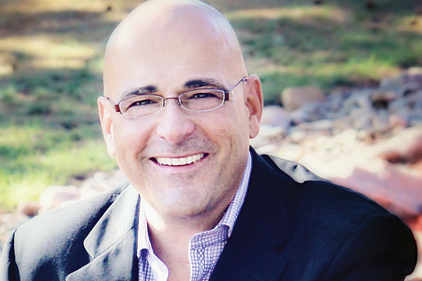Editor’s note: This is the first in a series of columns from Sharon Roberts and Weldon Long, who enjoy an open and spirited collaboration. Although they come from different backgrounds, Sharon and Weldon have developed a professional relationship that uniquely expands the synergy of their differences.
 Sharon: Have you noticed how one person with “yeah but” disease can infect a group and suck the life right out of it? You know what I mean — the person who said, “Yeah, but the economy sucks, and nobody’s buying a thing.” This junk spreads like wildfire. Yeah but disease isn’t nuisance chatter, it’s a contagious disease that kills sales, business — and sometimes people.
Sharon: Have you noticed how one person with “yeah but” disease can infect a group and suck the life right out of it? You know what I mean — the person who said, “Yeah, but the economy sucks, and nobody’s buying a thing.” This junk spreads like wildfire. Yeah but disease isn’t nuisance chatter, it’s a contagious disease that kills sales, business — and sometimes people.
This is not a theory — it happens. My good friend shared this story with me. His friend, a business owner, committed suicide. It felt unbelievable because the man did not fit the profile. He bared his soul in the suicide note to his family and his longtime business buddies. His company was going under and he could not bear the shame of his failure. Though most stories don’t end with suicide, they do involve people with real problems and the families connected to them. I’m blowing the cover on shame and fear and the yeah but con game that makes people feel less than they are.
 Weldon: This is so true, Sharon. Ralph Waldo Emerson wrote that “we become what we think about all day long.” Our thoughts trigger chemicals in our brain that drive our emotions, which in turn drive our actions and results. That’s why if we think the economy sucks or customers only care about a cheap price, the thought will lead to a negative emotion which ensures a lackluster sales performance and sales results that reinforce the negative expectation.
Weldon: This is so true, Sharon. Ralph Waldo Emerson wrote that “we become what we think about all day long.” Our thoughts trigger chemicals in our brain that drive our emotions, which in turn drive our actions and results. That’s why if we think the economy sucks or customers only care about a cheap price, the thought will lead to a negative emotion which ensures a lackluster sales performance and sales results that reinforce the negative expectation.
It’s not magic pixie dust; it’s just a neurological chain of events. That’s why our mothers told us to “be careful what you wish for.”
Sharon: That’s right, Weldon, magic pixie dust it isn’t. It’s neurology and it’s available all the time. You are famous for encouraging everyone to “think about what you think about.” So think about this: Researchers at Columbia and Harvard universities demonstrated that in two minutes your body posture can change your neurochemistry, and that changes your mind. So do it.
Stand right up and stare fear in its face. Put your fist in the air and act as if you are powerful for two minutes. Or, strike the Wonder Woman high-power pose, hands on hips, feet firmly planted, for two minutes.
Here’s what happened with both male and female participants in high-power poses. The dominance hormone, testosterone, increased by 20 percent and caused people to feel more powerful and in charge. The stress hormone, cortisol, decreased by 25 percent, and that’s important since it relates to tolerance for risk and how people respond to stress. Their perception of risk and reward changed. That resulted in changing the choices they made and that changed their behavior. Their behavior changed their outcomes.
Weldon: We can definitely change our emotional state by changing our physical state, and you’ve quoted the studies that prove it. It’s impossible to focus on optimistic thoughts and accidentally generate negative emotions. Emotions are a consequence of a chemical reaction in the brain so the emotion is always consistent with the thought. This reality can make or break our business performance. Our results rarely exceed our expectations, so it’s important to set high expectations.
There is a little part of our brain called the reticular activating system (RAS) that basically ensures that we notice the information to prove our expectations correct. The result is that if you think the economy sucks, you’ll find proof that you are right. If you think you can prosper in the face of this economy, you’ll find proof that you are right. Our results pretty much mirror our expectations.
Sharon: Absolutely. And, brain scans show us that many of the same parts of the brain are activated when we are imagining doing something, e.g., making a sales presentation or skiing, just the same as it is when we’re actually taking the action. What if you and your team make a habit of focusing on successful actions while high-power posing? The neurons in your brain will be firing at warp speed.
Neuroscientists explain when two neurons fire at the same time repeatedly, or when one fires and causes another to fire, that causes chemical changes to occur in both, so that the two connect more strongly. Or, as neuroscientist Carla Shatz says, “What fires together, wires together.” Your neurons will fire faster and wire together with more groups of neurons that give off clearer and more powerful signals. And that’s significant because a more powerful signal has a greater impact on the brain.
Weldon: Also consider this: Memories are created when something happens in our lives, and it’s combined with a powerful emotion. Think about a memory from your childhood. Chances are the memory is of an event where you were really happy or really sad or really scared or really something. That’s how memories happen.
Now imagine combining your dreams, aspirations, and goals for your business with the emotions of what it’s going to feel like when you reach them. The net result is better focus and clarity on working toward your dreams because they are programmed like a childhood memory. You’ll never forget what you are working on in your life, and you’ll have better focus and ability to move toward your business objectives.
You can get emotionally committed to your dreams by writing out what you want in life and what you need to do to get there. Then through a process I teach called a “quiet time ritual,” you can review those dreams on a daily basis and allow yourself to experience the emotions as if you’ve already achieved those dreams. This process will program your dreams into your subconscious just like that childhood memory. It will also give you better focus, clarity, and purpose throughout your day.
Sharon: Weldon, I’m glad you’re focusing on the emotional link. It’s easy — and dangerous to dismiss this as a “woman’s issue.” Fear, for example, is a powerful emotion that affects (and afflicts) men and women alike. Fear not only feeds on its victims, it conditions the RAS to tune into the yeah but negativity. And, as my engineer husband likes to point out, entropy is a law of nature that makes it easier for things to fall down than up.
On the flip side, researchers discovered those people who spent two minutes in low-power postures, sitting in the fig-leaf position or standing with one arm wrapped around the other, felt powerless and were more averse to taking risks. Their testosterone decreased by 10 percent and their cortisol increased by 15 percent. Many of them were likely miserable and afflicted with mind-numbing yeah but disease. They can choose to adopt the simple and significant habit of high-power posing and rewire their brains for resilience and power. You’ve always got two minutes to stand in a high-power pose, especially when you don’t feel like it. Imagine the possibilities.
I personally know the mighty impact of body language, both high-power and low-power postures. For the past 20 years I have taught salespeople, engineers, attorneys, psychologists, and CEOs how to read body language and how their body language has the power to literally rewire their brains. I have witnessed astonishing behavior changes in people in one day that sparked what became sustained transformational change. What fired together, wired together.
Weldon: Right again, Ms. Roberts. I have worked with thousands of sales professionals and spoken with the likes of Tom Hopkins and the late Dr. Stephen R. Covey. The greatest teachers and the best students agree that our results almost always reflect our emotions and expectations.
Want better sales and business results? Then get your mind right by improving your physiology and expectations.
SIDEBAR: 5 Steps for Prosperity Power
Step 1: Admire yourself for having the courage to get up and keep trying.
Step 2: Strike a power pose for two minutes — even when you don’t feel like it.
Step 3: Write out what you want in life and what you need to get there.
Step 4: Every day vividly imagine and feel the emotion as if you have already achieved your dreams.
Step 5: Celebrate! Throw your arms in the air and strike the victory pose.
Publication date: 3/11/2013


Report Abusive Comment